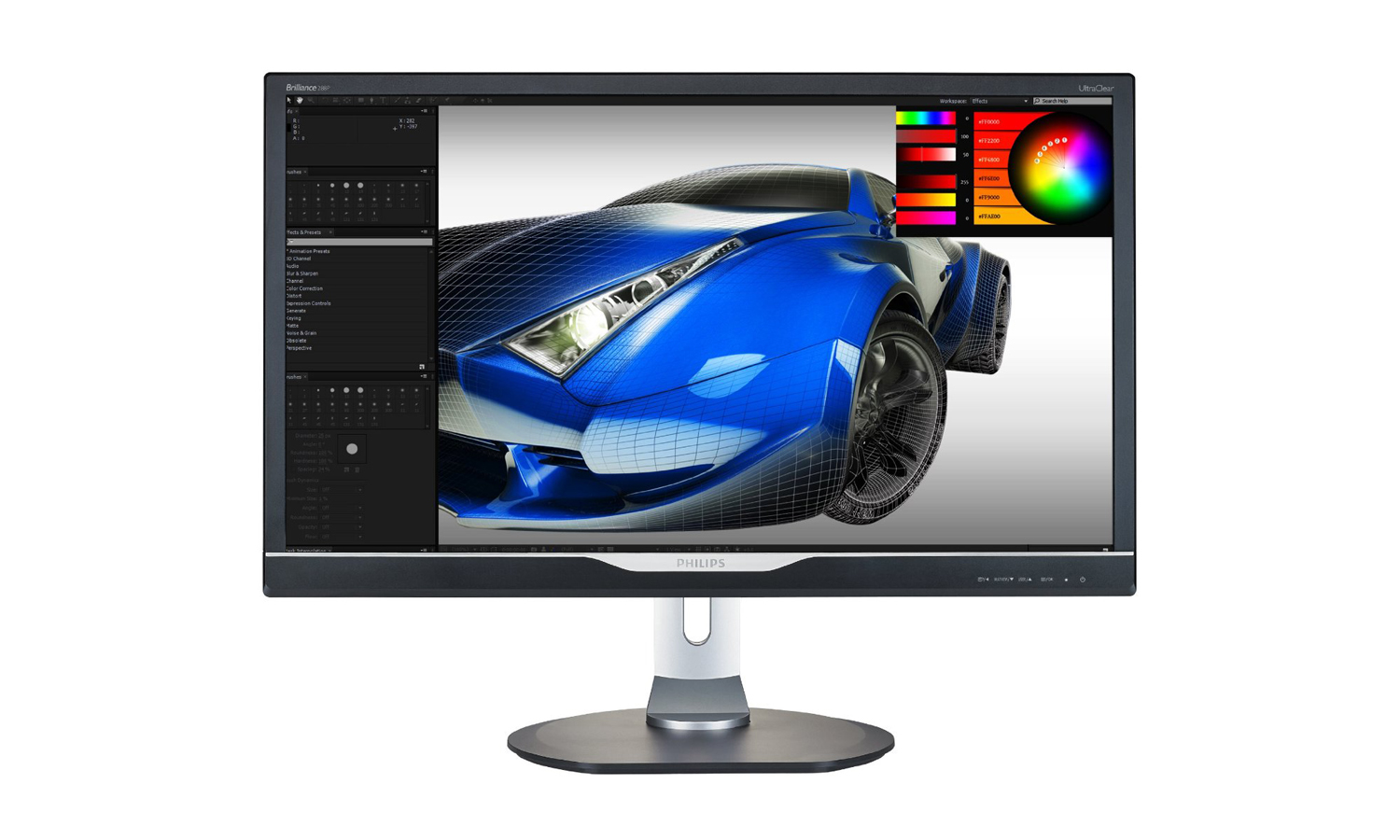Tom's Guide Verdict
The Philips Brilliance 288P is a 4K monitor that offers crisp images, even though its interface isn't ideal.
Pros
- +
Relatively inexpensive
- +
Full-4K display
- +
Extensive options
Cons
- -
Buttons sometimes unresponsive
- -
Unimpressive speakers
- -
Some dull colors
Why you can trust Tom's Guide
No one said that 4K monitors come cheap, but they don't have to bankrupt early adopters either. The Philips Brilliance 288P ($450) offers pretty good picture and color quality, with few frills and a reasonable price tag. The 288P makes both 4K- and standard-HD content shine, and plays nicely with both games and video. The device's built-in speakers are not up to par with the rest of the device, but overall, the 288P is an impressive monitor that's affordable enough to entice some users who are on the fence about making the jump to 4K.
Design
The 288P is an attractive enough monitor, even though there's nothing particularly creative about it. The screen is a black rectangle that encases a 28-inch display. The screen is held in place by an adjustable metal arm, which you can use to move the screen up and down, tilt it forward or away, and orient it horizontally or vertically.I wish I hadn't needed to tilt the screen at an odd angle before I could rotate it vertically. If you try to force it, you can scratch the circular black base very easily. While this is not a deal breaker, I would have liked a tiny bit more vertical leeway to avoid such aesthetic disasters.

The 288P is unusually heavy for its size (25.9 x 22.6 x 2.0 inches), weighing 17.7 pounds. Competing 28-inch monitors from Asus and Lenovo tend to be a bit lighter. Chances are that you won't have to move it once it's in place, though.
Ports and Interface
The back of the 288P is replete with ports. You can hook up your computer (or game console, or streaming box, or tablet, or whatever else you have lying around) through VGA, DVI, MHL/HDMI or DisplayPort, all of which are fairly easy to connect.
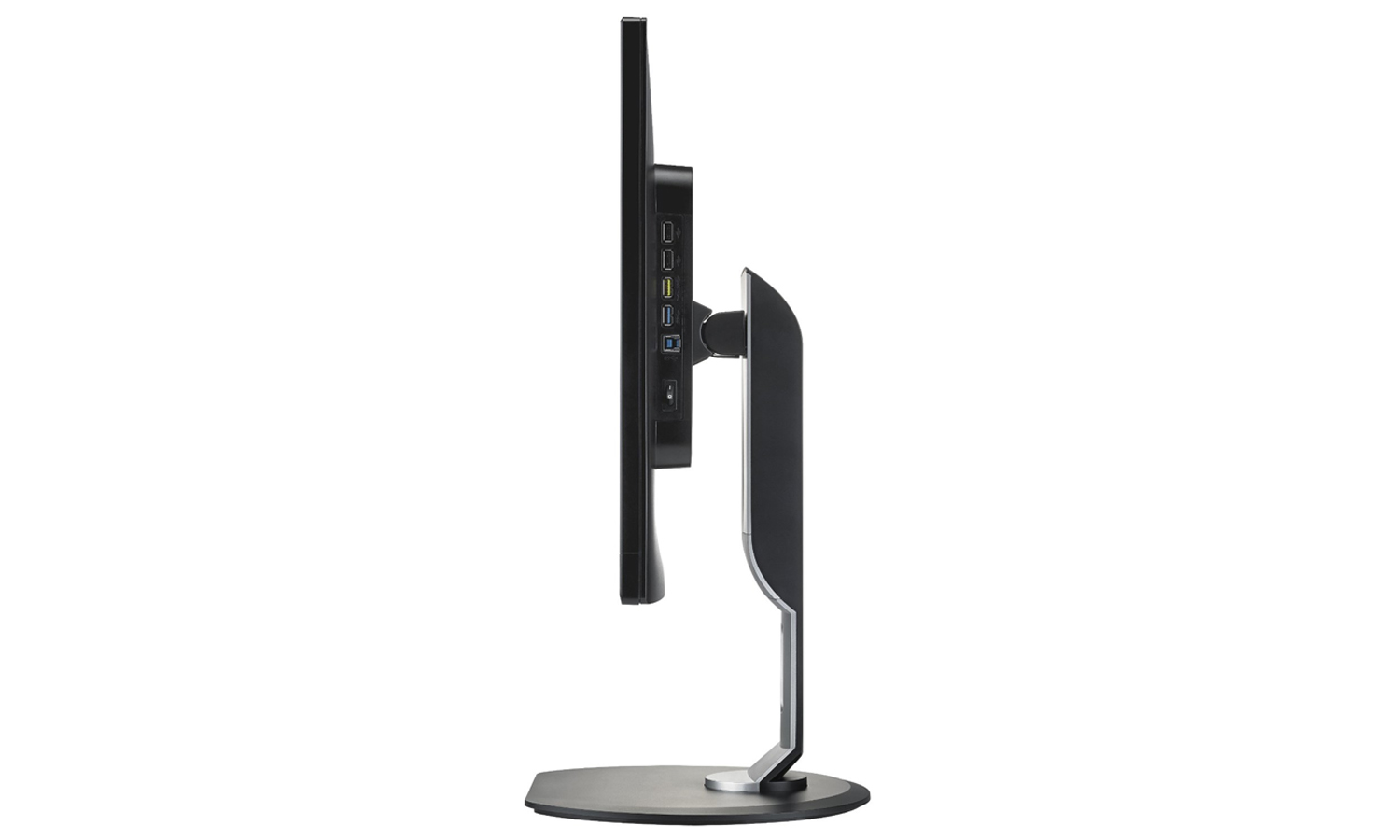
There's also a headphone jack and an audio-out port right next to the display inputs. Since the 288P has built-in speakers, the sound options are a nice touch, even though its sound processing is hardly top-of-the-line.
A handful of USB connections on the right side of the monitor should help the 288P feel at home with your setup, no matter how many extra bells and whistles you need.
MORE: Best Gaming Mice
At the front of the 288P, a few touch-based buttons serve double duty as the menus and the cursor options for said menus. Users can play with these buttons to adjust picture quality, volume and special features, such as picture in picture. The menus are straightforward (more on the options they offer later), although the buttons are not as responsive as they could be. I often had to tap them multiple times before they registered my commands, and I ended up exiting by accident more times than I care to admit.
Performance
I put the 288P through its paces with our standard roster of Tom's Guide test titles: Titanfall, StarCraft II: Heart of the Swarm, Batman: Arkham Knight and Star Wars: The Old Republic. I dialed each game up to 4K resolution and loved what I saw across all four titles.

In Titanfall, the pilots and mechs looked crisp and clean on the futuristic battlefield, while in Heart of the Swarm, I could make out fine details on the distant soldiers under my command. Gotham City came alive in Arkham Knight, and both the character models and extensive backgrounds were distinct and colorful in The Old Republic.
One caveat about the screen is that while it supports a frame rate of up to 60 fps, we were only able to test 4K games at 30 fps. This is a function of our testing rig, and your performance will vary, depending on what parts comprise your machine.
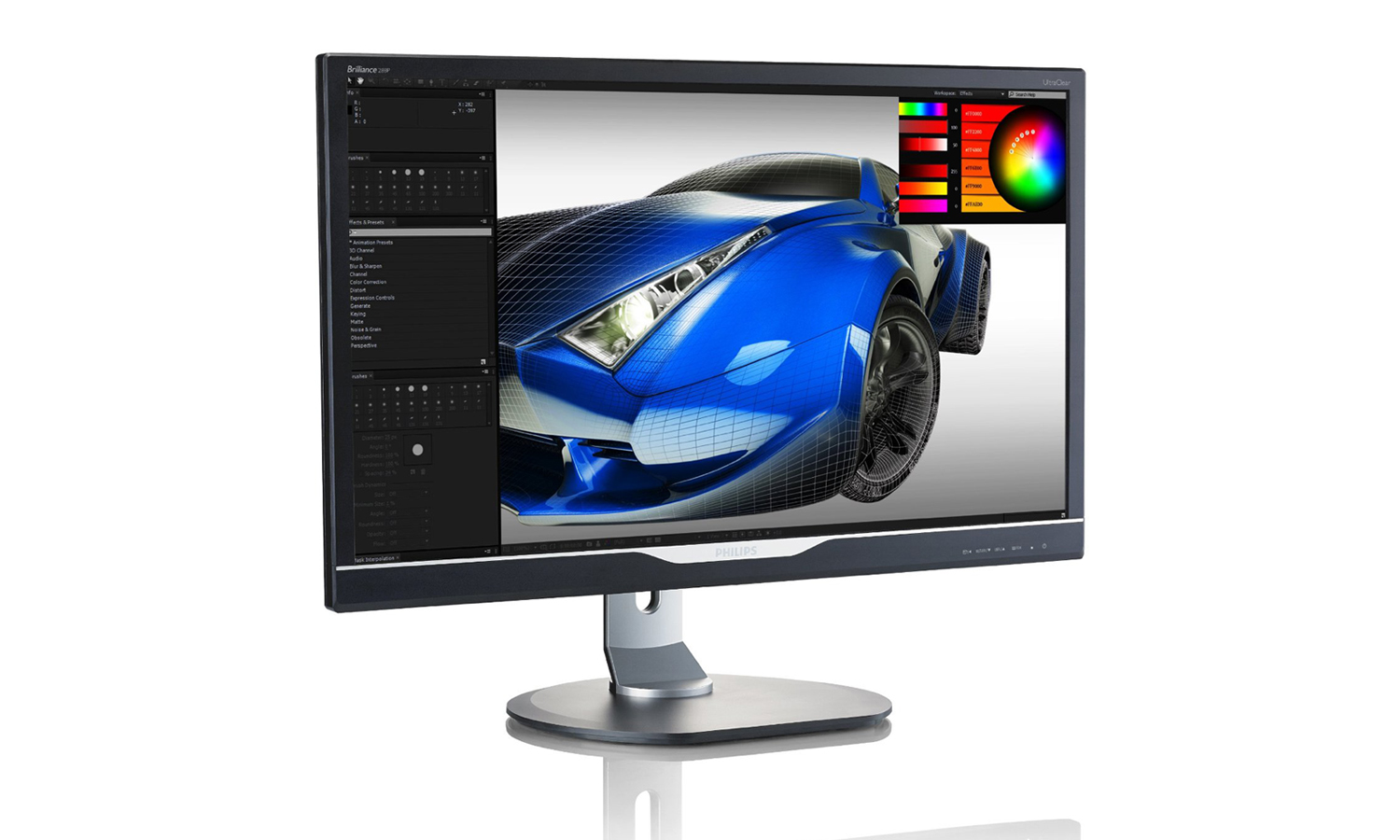
If you have 4K content to watch rather than play, the 288P also does a reasonable job of conveying it. I watched some nature and cultural footage in 4K, including Costa Rican wildlife as well as clips of the tide coming in, a classic train coming into a station and a car zooming through the woods.
In all cases, the videos looked sharp, but washed-out. Everything appeared a few shades lighter than normal, and I confirmed this by testing the 288P side by side with the more color-accurate Planar IX2850 4K monitor. The blues on the 288P were also a little more saturated than they should have been, and the reds a little deeper. While these are admittedly slight complaints, resolution is only part of the UHD equation. Without gorgeous color, 4K content isn't quite as striking as it's supposed to be.
Brightness, Color and Latency
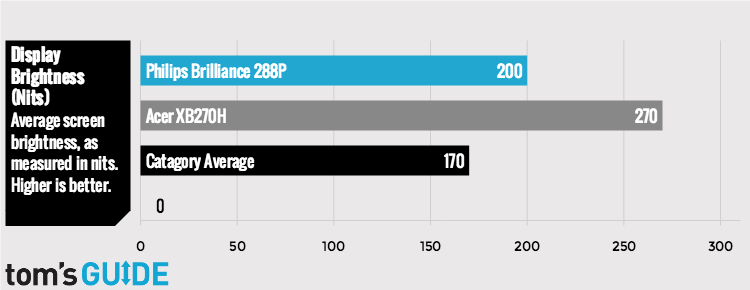
In terms of specifications, the Philips holds its own with the rest of the gaming monitor market. Its -nit brightness exceeds the industry-standard 170, while its 98.75-percent color gamut falls a few points shy of perfection. (Some monitors can exceed 100 percent.) The Delta E color accuracy measured 2.98, which is likewise pretty good (zero is ideal).
MORE: Best Gaming Keyboards
The screen's latency is 60 ms, which is about par for the course for 4K screens.
Modes and Features
The 288P features an extensive menu, which lets users tweak just about every aspect of the monitor’s appearance. You can adjust old standbys such as color, contrast, sharpness, and vertical and horizontal positioning, but you can also play around with refresh rate and different presets. Users can choose from modes like Game, Movie, Office, Economy and even a smart mode that automatically adjusts your screen based on the content. (In my experience, this worked pretty well, but like any automated brightness mode, it will totally botch the color scheme sometimes.)
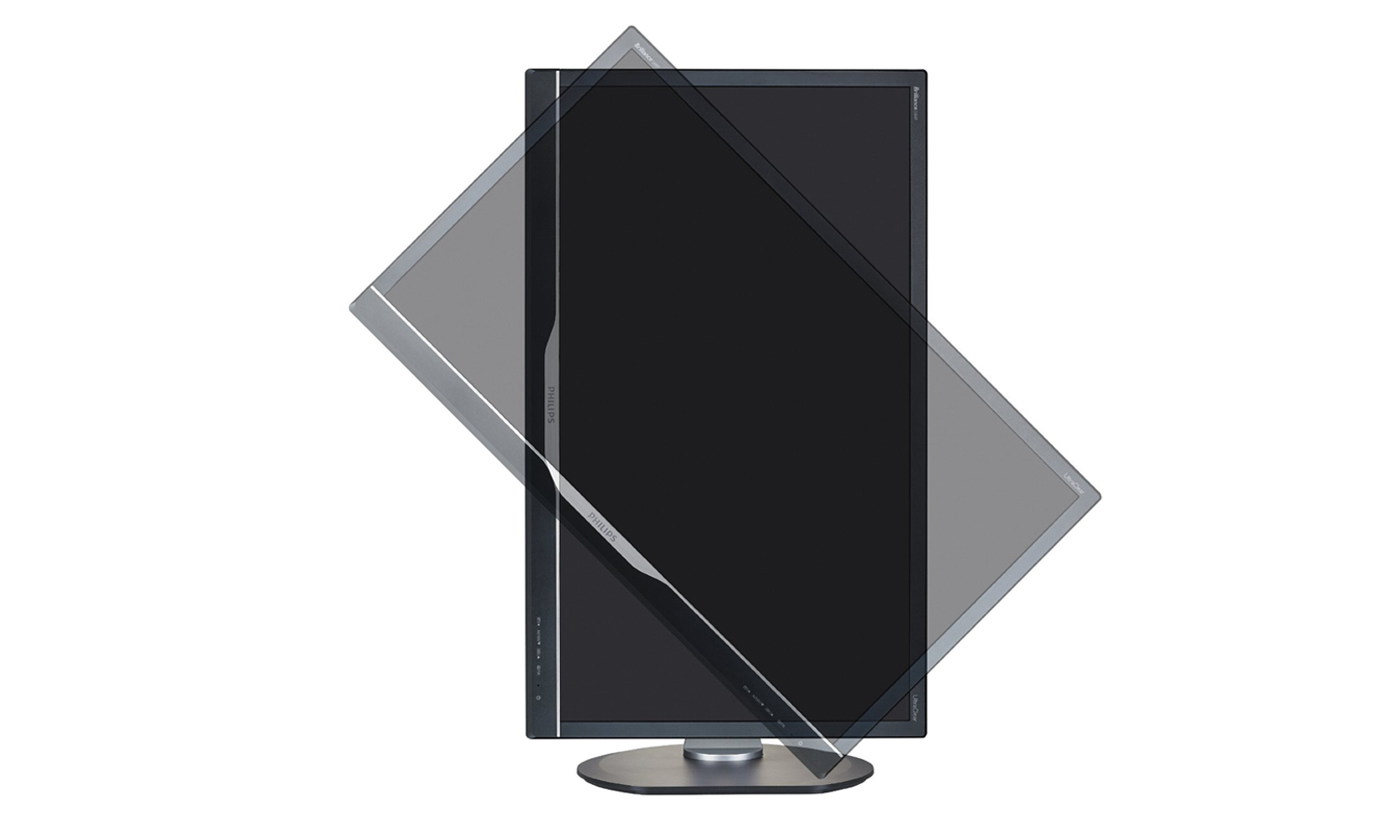
Users can also take advantage of picture-in-picture (PiP) and picture-by-picture (PbP) modes on the 288P. If you have multiple devices hooked up to the monitor, you can watch two of them at a time. PiP displays one large screen and one smaller one up in a corner, whereas PbP displays the two sources side by side. The feature works well, although given that the 288P is a full-4K monitor, the ability to see four inputs at once would have been better.
Bottom Line
If you don't mind adjusting its color and contrast a bit, the Philips 288P is quite capable of displaying both 4K games and video, and for much less money than some of its competitors. The monitor is a little clunky, but those are probably its worst faults. If you've built yourself a 4K gaming rig — or plan to do so soon — and don't feel like dishing out cash like it's going out of style, the 288P is a very good choice.
Marshall Honorof is a senior editor for Tom's Guide, overseeing the site's coverage of gaming hardware and software. He comes from a science writing background, having studied paleomammalogy, biological anthropology, and the history of science and technology. After hours, you can find him practicing taekwondo or doing deep dives on classic sci-fi.
